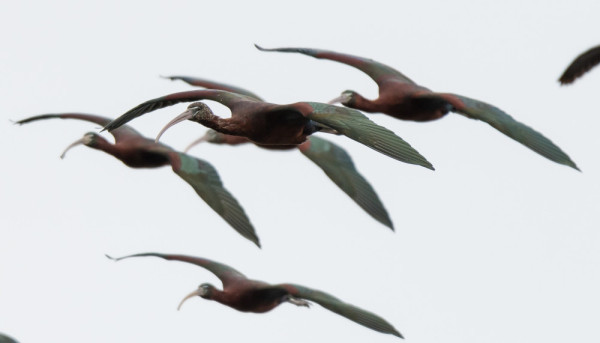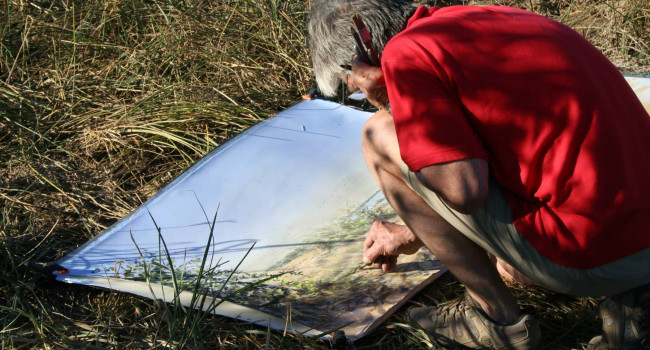
BirdTrack migration blog (21st-27th October)
Scott’s role includes the day-to-day running of BirdTrack: updating the application, assisting county recorders by checking records and corresponding with observers.
Relates to projects
A much-anticipated change in wind direction on Tuesday afternoon had many birders excited at the prospect of what these easterly winds could deliver, and deliver they did with a huge arrival of winter thrushes in particular.
Several locations recorded thousands of Redwing arriving on Wednesday morning, with Flamborough counting an impressive 33,000 by late afternoon. This astonishing number was eclipsed by Crosby Marine Park in Lancashire, however, where over 122,000 of these beautiful winter thrushes passed through between 07:30 and 14:30. Fieldfare also arrived en masse, with the same site recording almost 19,000 during the same time period.
This arrival is no doubt linked to the prevailing weather conditions, but also to the almost total failure of rowan berries across Scandinavia, where large flocks have already been recorded further west and south than is usual for the time of year.
You can read more about BTO's work on AI in our blog.
Go to blogOther species to arrive in good numbers included Blackbird, Ring Ouzel, Goldcrest, and Brambling. As would be expected, a few scarcer species were found with the first pulse of Pallas’s Warbler being the highlight for many. This striped Siberian beauty is a birders' favourite and many will hope to find or see one this autumn. Several sites also reported both Short-eared and Long-eared Owls arriving off the North Sea, a strange but exhilarating sight for those lucky enough to be in the right place at the right time.
Dark-bellied Brent Geese continued to arrive from Arctic Siberia in good numbers with flocks pushing south along eastern coasts to their wintering areas. Other wildfowl arriving during the last week included Wigeon, Teal, Pintail, and Shoveler - more of these are sure to appear in November and December as colder weather sets in.
The many pairs of eyes looking out to sea during the past week highlighted the lack of Great Skua reports this autumn. This is almost certainly a result of the devastating impacts avian flu has had on this species this summer, with several breeding colonies almost totally destroyed. The BirdTrack reporting rate for this year shows this dramatic decline since June.
A lone Waxwing in Shetland was the first of the autumn and could be the harbinger of what is to come with big numbers building up in Sweden and Finland as a result of the rowan berry failure this year.
Rarities found in the last few days include Siberian Rubythroat in Shetland, Brown Booby in Dublin, and Blue Rock Thrush in Norfolk.
A wet and mild week with a slower migration pace is ahead - but keep your eyes peeled, as birds moving southward through the UK in drier, calmer spells can be found anywhere.
Looking ahead
The easterly winds of last week are set to be replaced with southerlies for much of the coming week, as a couple of low-pressure systems take charge. Associated with these low-pressure systems are periods of rain that will result in a rather wet but mild week ahead.
The direct result of these weather conditions will be a slowing of migration compared to the last few days. That said, there could be some shorter-range movements - look out for birds that have already arrived in northern parts of the country moving southwards during any periods of lighter winds or brighter weather. A drop in wind speed could result in the movements of finches, pipits, Skylark, and thrushes.

Saturday looks set to be relatively calm, and will be a good day to get out and look for any birds that arrived during the last couple of days. At this time of year, migrants can often hang around for a few days to build up reserves for their onward migration. East coast locations will be the best places to look, but some birds will already have pushed inland; good birds could be found anywhere, and the Red-flanked Bluetail found in a wood in Glamorgan earlier this week is a testament to this.
With the sustained southerlies, the sea could produce a few shearwaters, some of which could push into the North Sea. At this time of year, Sooty Shearwater is the most likely species, but both Manx and the occasional Balearic could also be seen.
Most of the migrants that arrive will hail from southern and western Europe, and could include Glossy Ibis, Pallid Swift, or maybe something rarer like Squacco Heron or a Black-eared Wheatear.
Send us your records in BirdTrack
As we've already seen with Great Skua, BirdTrack reporting rates are giving us an insight into the extent of the impacts of Avian Influenza (AI).
Please consider submitting your records to BirdTrack to support our efforts to combat AI.
Go to BirdTrack









Share this page